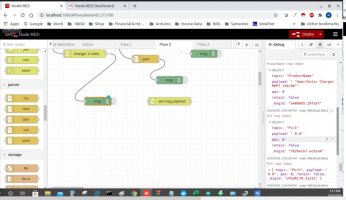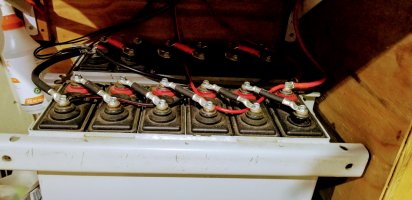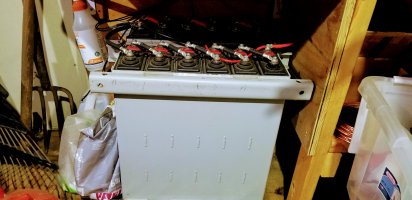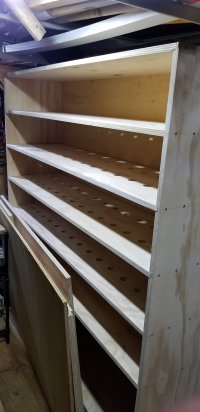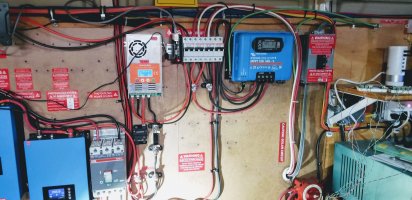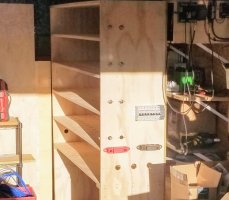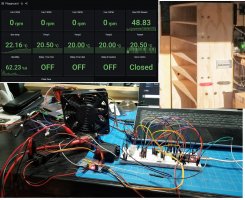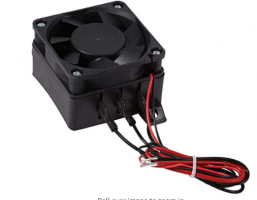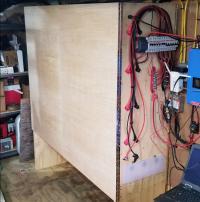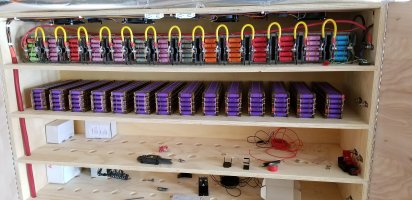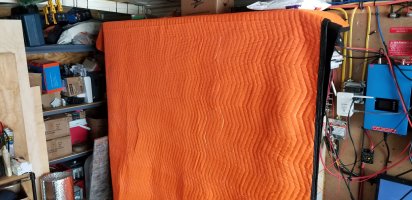Wolf
Moderator
- Joined
- Sep 25, 2018
- Messages
- 2,009
Yes it will take me to 28 packs.OffGridInTheCity said:When these are ready... do you have 14 packs and this will take you to 28 packs? Will you be having 2 x 14s batteries or paralleling these new packs in with existing packs.
Its so much fun to get 1,000(s) of cells hooked up ready to charge and discharge!
I am more than likely going with 2 X 14s. Besides I already have the longmons.
The new and improved plan is to have 4 X 14s with 1 pack to be a backup spare. Yea I got the bug
Right now I'm working out a rotation strategy in my minds eye but I'm not sure how Batrium would fit into this picture.
The plan would be to keep 3 packs live and 1 pack as an emergency spare. Winter storm, snow covered panels power failure etc.
I have found new respect for my 4s3p lead acids though. For one they don't mind being fully charged and can be charged easily at sub 0° C.
They are on a tender and can be easily switched in. Last resort only though.
As winter is approaching I have yet an untested heating system to keep the Li-ion's above 0° C preferably at least 5° C.
We will see.
Yes it is a lot of fun. I am in the process of getting another ~2800 cells to finish the new and improved plan.
Stay tuned though because all plans are subject to change.
As long as 18650's are available who knows what will happen.
daromer said:Wolf: Perhaps you said this before but what do you use to check Humidity and temperature and what is used for the PWM to the fans ?
I assume you are talking about the battery box.
I use an ESP32 to collect temp and humidity from a DHT22.
The ESp32 feeds (2) 3.3V relays which in turn feed (1) 5V 2 channel 30A relay to power the fans with 12V and also the (experimental) Heaters.
I know I could have used a level shifter. Next design I promise.
Ah the PWM on the fans. Yea that was a lot of fun. Actuall the PWM by itself with a DS18B20 as the temp source and a quick map of temp to PWM was easy.
Also getting Fan RPM by itself from the fans hall switches wasn't that bad either. Now getting both of them running together on an ESP32 that was a challenge.
Giving 3 fans a PWM signal from 1 ESP32 wasn't that hard either but I couldn't figure out how to get RPM from 3 fans on 1 ESP32.
So each fan has its own ESP32 with a DS18B20 to control the speed. Sounds kind of neat as they sync with each other.
I will more than happily share the sketch with you if you want it. It took me a good month to figure it out. But then again I am an amateur.
My other 2 fan sets are Shed Intake Air and Shed Exhaust Air.
Those where initially controlled by AW1209 Temperature Control Switches which as a matter of fact just recently failed.
They tied to a DC 12V 3Bit PWM 4-Wire Fan Temperature Controller. Those still work fine.
So I just recently changed the 2 AW1209s to an ESP32 with 3 DS18B20.
Shed temp, intake air temp right and left. It controls 6 server case fans. I was not going with RPM sensors maybe later.
As you can see I am a fan of ESP32 I got all kinds of them in stock (fans too). If I can write the code to sense it and control it I'm on it.
Wolf

Last edited:








